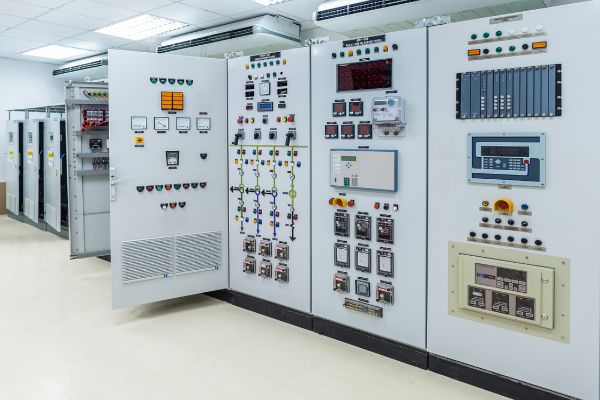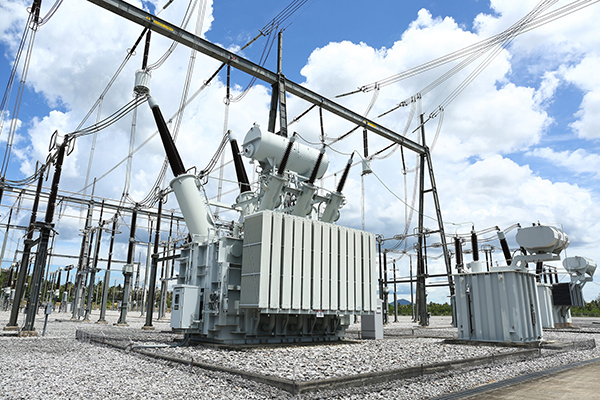
Uncertain power capacity can lead to operational failures. Understanding generator output ensures reliable performance for your needs.
A diesel generator’s output is measured in kilowatts (kW) or kilovolt-amperes (kVA) and varies based on engine capacity and efficiency.
Choosing the right generator requires knowing how output is measured, what affects it, and the typical power ranges available.
How Is the Output of a Diesel Generator Measured?
The power rating of a diesel generator determines how much electricity it can supply.
Diesel generator output is measured in kilowatts (kW) and kilovolt-amperes (kVA)1, with power factor affecting the conversion between the two.

Understanding Power Ratings
- Kilowatts (kW): The actual usable power delivered to electrical loads.
- Kilovolt-amperes (kVA): The apparent power, which includes both usable power and reactive power.
- Power Factor (PF)2: The ratio of kW to kVA, usually around 0.8 for most industrial applications.
Power Rating Formula
[
kW = kVA \times \text{Power Factor (PF)}
]
For example, a generator rated at 100 kVA with a power factor of 0.8 produces:
[
100 \times 0.8 = 80 kW
]
Power Ratings for Different Applications
| Application | Power Rating (kW) | Power Factor (PF) |
|---|---|---|
| Residential Use | 5-20 kW | 0.8-1.0 |
| Commercial Use | 50-500 kW | 0.8 |
| Industrial Use | 500 kW - 2000 kW | 0.8 |
Understanding these measurements helps select the right generator size for specific applications.
What Factors Affect the Power Output of a Diesel Generator?
Generator performance depends on multiple variables that influence power production.
The output of a diesel generator is affected by load demand, fuel quality, altitude, temperature, and maintenance.

Key Factors Affecting Generator Output
-
Load Demand
- A generator operates best at 70-80% of its rated capacity.
- Running at low loads can cause inefficiencies and carbon buildup.
-
- Clean diesel improves combustion and maximizes power output.
- Contaminated fuel reduces efficiency and increases wear.
-
- At higher altitudes, air density decreases, reducing engine power.
- Power output can drop by 3% for every 300 meters above sea level.
-
Temperature
- High ambient temperatures can cause overheating and reduced efficiency.
- Proper cooling systems help maintain optimal performance.
-
- Dirty air filters, worn injectors, and clogged fuel lines lower efficiency.
- Routine servicing ensures stable power output.
Performance Impact Table
| Factor | Effect on Output | Solution |
|---|---|---|
| Load Variations | Underload reduces efficiency | Operate at 70-80% load |
| Poor Fuel Quality | Decreases power generation | Use clean, high-quality diesel |
| High Altitude | Reduces power by 3% per 300m | Use turbocharged engines |
| Hot Temperature | Overheating lowers efficiency | Ensure proper cooling |
| Lack of Maintenance | Clogged filters reduce output | Regular servicing |
Monitoring these factors ensures optimal generator performance and longevity.
What Is the Typical Power Output Range of a Diesel Generator?
Diesel generators are available in various power ratings to suit different applications.
The power output of diesel generators6 ranges from small 5 kW units for homes to large 2000 kW systems for industrial use.

Common Generator Power Ranges
-
Small Generators (5-50 kW)
- Used for homes, small businesses, and backup power.
- Suitable for running essential appliances and lighting.
-
Medium Generators (50-500 kW)
- Common in commercial buildings, hospitals, and telecom sites.
- Provides power for HVAC systems, elevators, and essential equipment.
-
Large Generators (500-2000 kW)
- Designed for data centers, manufacturing plants, and power stations.
- Can support entire facilities or critical backup systems.
Power Range Table
| Generator Size | Power Output (kW) | Common Applications |
|---|---|---|
| Small | 5-50 kW | Homes, small offices |
| Medium | 50-500 kW | Commercial buildings, hospitals |
| Large | 500-2000 kW | Data centers, industrial plants |
Choosing the right power capacity depends on energy demands and application requirements.
Conclusion
A diesel generator’s output is measured in kW and kVA, influenced by fuel quality, load demand, and environmental factors. Power ratings range from 5 kW for homes to 2000 kW for industrial applications.
-
This resource will help you understand the key differences between kW and kVA, essential for selecting the right generator. ↩
-
Understanding Power Factor is crucial for optimizing generator performance. This link will clarify its role in power generation. ↩
-
Understanding fuel quality's impact can help you choose the best diesel for optimal generator efficiency. ↩
-
Learn how altitude impacts generator performance to make informed decisions for installations in high locations. ↩
-
Regular maintenance is crucial for ensuring your generator runs efficiently and lasts longer, preventing costly repairs. ↩
-
Understanding the power output of diesel generators is crucial for selecting the right generator for your needs. Explore this link for detailed insights. ↩

